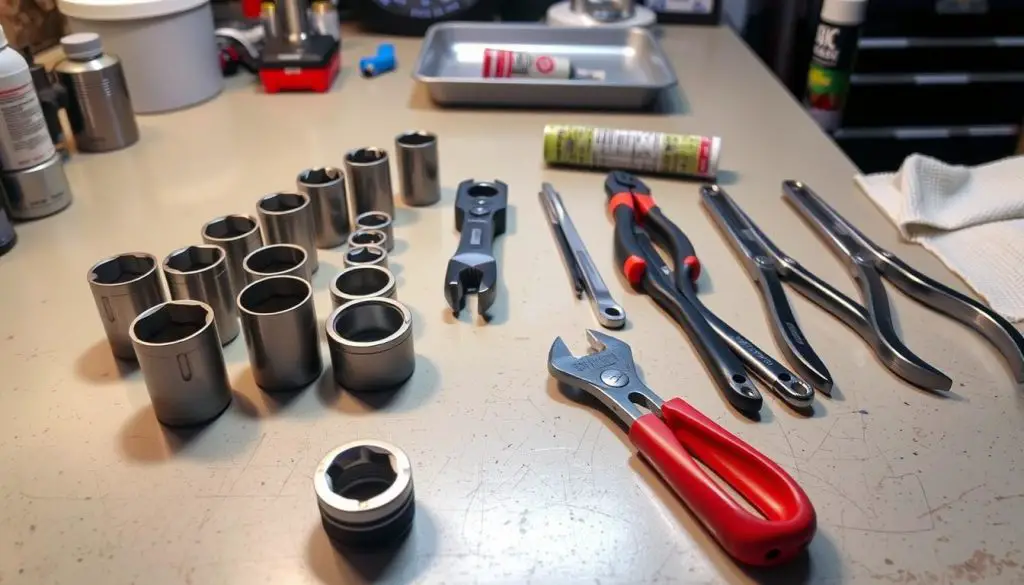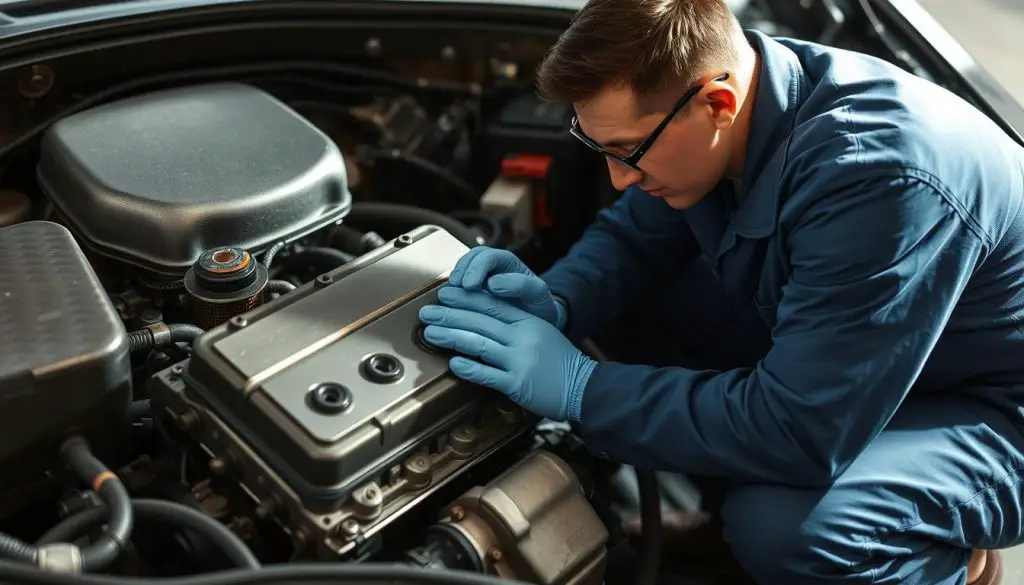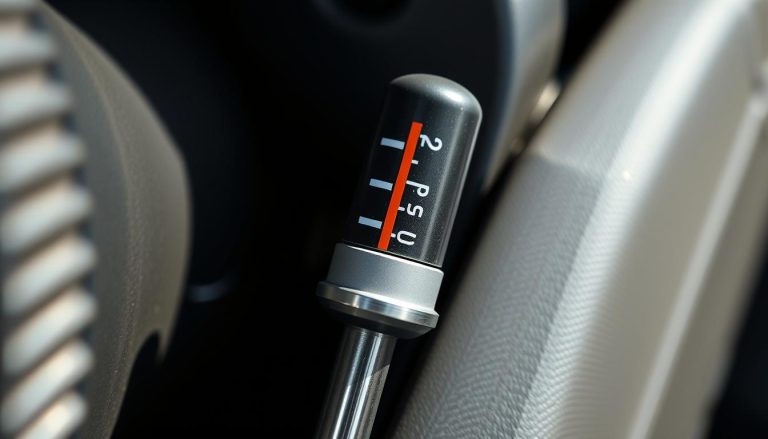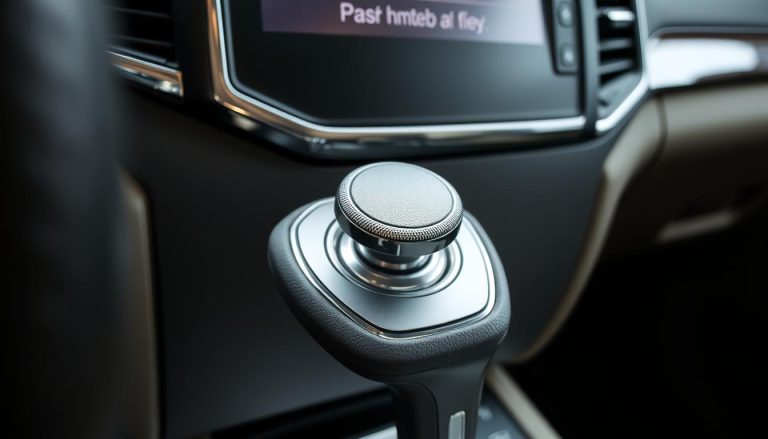For Jeep owners, maintaining their vehicle’s engine is crucial for optimal performance and longevity. One critical aspect of engine maintenance is the valve cover gasket replacement. A failing valve cover gasket can lead to leaks, decreased engine performance, and potentially costly repairs if not addressed promptly.
Understanding the cost associated with valve cover gasket replacement is essential for budgeting and making informed decisions about your Jeep’s maintenance. The cost can vary based on several factors, including the Jeep model, engine type, and labor costs. This guide will walk you through the signs that indicate the need for replacement, the average cost range for parts and labor, and provide a step-by-step DIY guide.
Key Takeaways
- Understand the signs indicating the need for valve cover gasket replacement.
- Learn about the average cost range for parts and labor.
- Discover the factors that influence the total replacement cost.
- Follow a step-by-step DIY guide for replacing the valve cover gasket.
- Understand the importance of timely replacement to prevent further engine damage.
Understanding Valve Cover Gaskets in Jeeps
A valve cover gasket is a critical seal that prevents oil leaks in a Jeep’s engine. It is a crucial component that ensures the engine’s performance and longevity by sealing the valve cover to the engine head.
What Is a Valve Cover Gasket?
The valve cover gasket is a seal placed between the valve cover and the engine head. Its primary role is to prevent engine oil from leaking out, thereby maintaining the engine’s internal lubrication system. A properly functioning valve cover gasket is essential for the overall health of the engine.
Function and Importance in Your Jeep’s Engine
The valve cover gasket plays a vital role in maintaining the engine’s performance by ensuring that the valve cover is securely sealed to the engine head. This seal prevents oil leaks, which can lead to decreased engine performance and potentially cause damage to other engine components. The importance of a high-quality valve cover gasket cannot be overstated, as it directly impacts the engine’s efficiency and longevity.
Common Materials Used in Valve Cover Gaskets
Valve cover gaskets are typically made from materials such as rubber, silicone, or a combination of both. The choice of material depends on the specific requirements of the engine, including temperature resistance and durability. Rubber gaskets are common due to their flexibility and sealing capabilities, while silicone gaskets offer enhanced durability and resistance to high temperatures.
Jeep Valve Cover Gasket Replacement Cost Breakdown
The cost of valve cover gasket replacement in Jeeps varies widely based on several factors, including the Jeep model, engine type, and labor costs. Understanding these factors can help Jeep owners estimate the total cost of the replacement.
Average Cost Range for Parts
The cost of the valve cover gasket itself can range from $50 to $200, depending on the quality and brand. High-performance gaskets or those made from premium materials can be on the higher end of this range.
Labor Costs at Dealerships vs. Independent Shops
Labor costs can significantly affect the total cost of replacement. Dealerships typically charge more than independent shops due to higher labor rates. On average, labor costs can range from $200 to $500.
Cost Variations by Jeep Model and Engine Type
The type of engine in your Jeep plays a crucial role in determining the replacement cost. Different engines have varying complexities, affecting both parts and labor costs.
4-Cylinder Engines (2.4L, 2.5L)
For 4-cylinder engines, the replacement cost tends to be lower due to simpler engine design. Parts and labor combined can cost between $300 to $600.
6-Cylinder Engines (3.6L, 4.0L)
6-cylinder engines are more common in Jeeps and have a moderate replacement cost. The total cost can range from $400 to $800.
V8 Engines (5.7L HEMI)
V8 engines, particularly the 5.7L HEMI, are more complex and have higher replacement costs. The total cost can range from $600 to $1,200.
| Engine Type | Parts Cost | Labor Cost | Total Cost |
|---|---|---|---|
| 4-Cylinder | $50-$150 | $200-$400 | $300-$600 |
| 6-Cylinder | $100-$250 | $250-$550 | $400-$800 |
| V8 | $150-$300 | $300-$900 | $600-$1,200 |
Signs Your Jeep Needs a Valve Cover Gasket Replacement
A failing valve cover gasket can manifest through several symptoms that Jeep owners should not ignore. Recognizing these signs early can prevent further engine damage and maintain performance.
Oil Leaks on Engine or Ground
One of the most common indicators of a faulty valve cover gasket is oil leakage. If you notice oil spots on the engine or ground where your Jeep is parked, it could be a sign that the valve cover gasket is compromised. Inspect the valve cover gasket area closely for any signs of leakage.
Burning Oil Smell and Smoke
A burning oil smell, especially when accompanied by smoke from the engine area, can indicate that oil is leaking onto hot engine parts due to a failing valve cover gasket. This situation not only wastes oil but also poses a risk of engine damage or fire.
Engine Performance Issues
A faulty valve cover gasket can lead to decreased engine performance. If your Jeep is experiencing rough idling, decreased power, or other performance issues, a failing valve cover gasket could be the cause.
Visual Inspection Indicators
Conducting a visual inspection can help identify potential issues. Look for signs of wear, damage, or oil residue around the valve cover gasket area. Regular inspections can help catch problems early.
| Signs | Description |
|---|---|
| Oil Leaks | Oil spots on the engine or ground |
| Burning Smell | Smell of burning oil, possibly with smoke |
| Performance Issues | Rough idling, decreased power |
| Visual Damage | Signs of wear or damage around the valve cover gasket |
Tools and Materials Needed for DIY Replacement
Before diving into a DIY valve cover gasket replacement, it’s essential to gather the necessary tools and materials. Having everything on hand will streamline the process and help avoid unnecessary delays.
Essential Tools List
The right tools are crucial for a successful DIY valve cover gasket replacement. You’ll need:
- A socket set with various sizes
- Torque wrench for precise tightening
- Pry bar for gently removing the old gasket
- Gasket scraper for cleaning the surface
Recommended Gasket Types and Brands
Choosing the right gasket is vital. Popular brands include Fel-Pro and Victor Reinz, known for their quality and durability. Ensure the gasket is compatible with your Jeep’s model and engine type.

Additional Supplies and Safety Equipment
Additional supplies such as RTV sealant, gasket adhesive, and safety equipment like gloves and goggles are necessary. These items will help ensure a leak-free installation and protect you during the process.
Service Manual Access
Having access to a service manual specific to your Jeep model is invaluable. It provides detailed instructions, torque specifications, and other critical information necessary for a successful replacement.
| Tool/Material | Purpose | Recommended Brand |
|---|---|---|
| Socket Set | Removing bolts | Craftsman |
| Gasket | Sealing valve cover | Fel-Pro |
| RTV Sealant | Sealing surfaces | Permatex |
Step-by-Step Valve Cover Gasket Replacement Guide
Replacing the valve cover gasket on your Jeep can seem daunting, but with the right guidance, it’s a manageable DIY task. This comprehensive guide will walk you through the process, ensuring you take the necessary safety precautions and follow a structured approach to complete the replacement successfully.
Preparation and Safety Precautions
Before starting, ensure you have the necessary tools and materials. Refer to the detailed guide for a comprehensive list. Safety goggles and gloves are essential to protect yourself from potential hazards.
Removing the Old Gasket
The first step in replacing the valve cover gasket is to remove the old one. This involves several sub-steps:
Disconnecting Electrical Components and Hoses
Carefully disconnect any electrical components and hoses attached to the valve cover. This will give you clear access to the cover and prevent any damage to these components during the replacement process.
Removing the Valve Cover
Use the appropriate tools to remove the bolts holding the valve cover in place. Gently pry the cover off, taking care not to damage the mating surfaces.
Thoroughly clean the mating surfaces to ensure a proper seal with the new gasket. Remove any debris, old gasket material, or oil residue.
Installing the New Gasket
With the old gasket removed and the area cleaned, you can now install the new gasket.
Proper Gasket Placement and Alignment
Align the new gasket with the valve cover, ensuring it is properly seated. Check that all bolt holes are aligned correctly.
Torque Specifications and Sequence
Follow the manufacturer’s torque specifications and sequence to secure the valve cover. This is crucial to prevent leaks and ensure the gasket functions correctly.
Reconnecting Components
Once the new gasket is in place, reconnect any electrical components and hoses you disconnected earlier. Double-check that all connections are secure.
By following this step-by-step guide, you can successfully replace the valve cover gasket on your Jeep, ensuring a leak-free and efficient engine performance. Remember, taking your time and adhering to safety precautions is key to a successful DIY repair.
Post-Replacement Testing and Verification
Post-replacement testing is a critical step in confirming the success of the valve cover gasket replacement. This process ensures that the gasket is properly seated and sealed, preventing future leaks and engine performance issues.
Initial Engine Start and Inspection
Start the engine and listen for any unusual sounds. Check the valve cover area for signs of leaks. A properly sealed gasket should not leak oil.
Checking for Leaks
Inspect the valve cover gasket area for any signs of oil leakage. Use a flashlight to illuminate the area and look for any drips or wet spots.

Monitoring Engine Performance
Monitor the engine’s performance for any issues, such as rough idling or decreased power. A well-sealed valve cover gasket should improve engine performance.
When to Recheck Torque Specifications
Recheck the torque specifications after the engine has reached operating temperature. This ensures the gasket is properly seated and sealed.
| Task | When to Perform |
|---|---|
| Initial Engine Start | After replacement |
| Leak Check | After initial start |
| Performance Monitoring | During initial drive |
| Torque Recheck | After engine reaches operating temperature |
Common Mistakes and Troubleshooting
A successful valve cover gasket replacement requires attention to detail and avoiding common mistakes. Even experienced DIY enthusiasts can encounter issues if they are not aware of the potential pitfalls.
Improper Torque Application
One of the most common mistakes is improper torque application. Over-tightening or under-tightening the bolts can lead to gasket failure or damage to the engine. It’s essential to follow the manufacturer’s torque specifications and use a calibrated torque wrench.
Using the Wrong Sealant or Adhesive
Using the wrong sealant or adhesive can compromise the integrity of the gasket and lead to leaks. Always use the recommended sealant or adhesive specified by the manufacturer or a reputable aftermarket supplier.
| Common Mistakes | Consequences | Prevention |
|---|---|---|
| Improper Torque Application | Gasket failure or engine damage | Follow manufacturer’s torque specs |
| Using Wrong Sealant/Adhesive | Gasket leaks or failure | Use recommended sealant/adhesive |
| Reusing Old Hardware | Reduced gasket performance | Replace hardware with new |
Reusing Old Hardware
Reusing old hardware can reduce gasket performance and lead to leaks. Always replace hardware with new components to ensure optimal performance. For more information on gasket replacement costs, you can visit this resource.
Surface Preparation Errors
Surface preparation errors can compromise the gasket’s ability to seal properly. Ensure that the surface is clean, dry, and free of debris before installing the new gasket.
Dealing with Stripped Threads or Broken Bolts
If you encounter stripped threads or broken bolts during the replacement process, it’s essential to address the issue promptly. Use a thread repair kit or consult a professional mechanic if necessary.
Conclusion
Replacing a valve cover gasket in a Jeep is a task that requires careful planning and attention to detail. By following this comprehensive guide, Jeep owners can successfully complete the replacement, ensuring their vehicle’s performance and longevity.
A successful DIY guide conclusion involves verifying that all steps have been followed, and the new gasket is properly installed. Understanding the Jeep valve cover gasket replacement summary helps owners make informed decisions about their vehicle’s maintenance, whether they choose to DIY or consult a professional.
Regular maintenance, including valve cover gasket replacement, is crucial for preventing costly repairs and maintaining the overall health of your Jeep’s engine. By staying proactive, you can enjoy a smoother driving experience and extend the lifespan of your vehicle.
FAQ
What is the average cost of replacing a valve cover gasket in a Jeep?
The average cost can range from 0 to 0, depending on the Jeep model, engine type, and labor costs.
How do I know if my Jeep needs a valve cover gasket replacement?
Signs that indicate the need for replacement include oil leaks on the engine or ground, a burning oil smell, smoke from the engine area, and engine performance issues.
Can I replace the valve cover gasket myself?
Yes, with the right tools and materials, and by following a step-by-step guide, you can successfully replace the valve cover gasket yourself.
What are the common materials used in valve cover gaskets?
Valve cover gaskets are typically made from rubber, silicone, or a combination of materials.
How do labor costs compare between dealerships and independent shops?
Labor costs can vary significantly between dealerships and independent shops, with dealerships often charging more for the same service.
What are the essential tools needed for a DIY valve cover gasket replacement?
Essential tools include a socket set, torque wrench, gasket scraper, and new gasket.
How do I ensure proper gasket placement and alignment?
Follow the manufacturer’s instructions and ensure the gasket is properly seated on the valve cover before tightening the bolts.
What are the consequences of not replacing a faulty valve cover gasket?
Failing to replace a faulty valve cover gasket can lead to further engine damage, decreased performance, and potentially costly repairs.
How often should I recheck torque specifications after replacing the valve cover gasket?
It’s recommended to recheck torque specifications after the initial engine start and again after a few hundred miles to ensure the gasket is properly seated.


